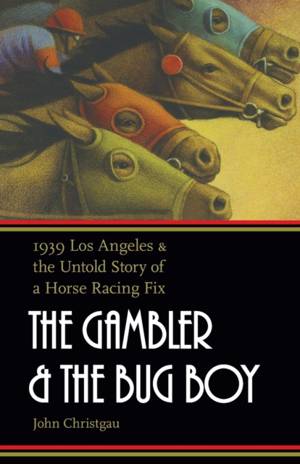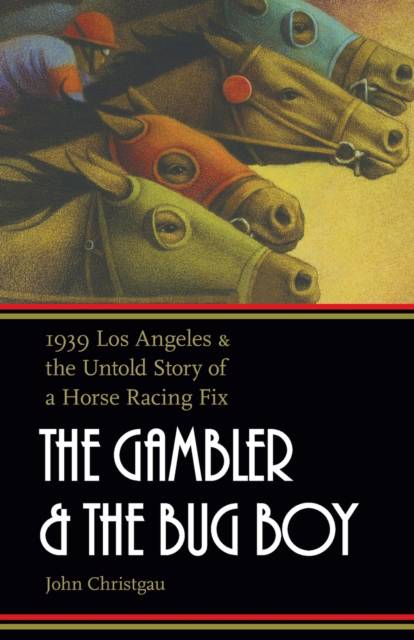
- Afhalen na 1 uur in een winkel met voorraad
- Gratis thuislevering in België vanaf € 30
- Ruim aanbod met 7 miljoen producten
- Afhalen na 1 uur in een winkel met voorraad
- Gratis thuislevering in België vanaf € 30
- Ruim aanbod met 7 miljoen producten
Zoeken
The Gambler and the Bug Boy
1939 Los Angeles and the Untold Story of a Horse Racing Fix
John Christgau
Paperback | Engels
€ 33,45
+ 66 punten
Omschrijving
"Scandal on the Turf!" the Los Angeles Times proclaimed. It was October 1940, a mere few months after Seabiscuit had won the Santa Anita Derby, and now this bombshell: "Six Jockeys Admit Horse Races Fixed." The Gambler and the Bug Boy recounts this dark chapter in horse racing history. At its center is Bernard "Big" Mooney, a flashy L.A. bookmaker who began his seedy career by threatening young jockeys with death if they didn't "pull" their horses. His unwilling partner is Albert Siler, a callow, eighteen-year-old apprentice rider (a so-called bug boy) from eastern Oregon. John Christgau tells how Big Mooney manipulated this promising rider and how Siler tried to escape the gambler's criminal grip without ruining his career. Christgau's book gives all the harrowing details of the unraveling plot and the botched court case that followed which riveted the attention of the nation. Told in full for the first time, this story brings to light a little-known but important horse racing scandal.
Specificaties
Betrokkenen
- Auteur(s):
- Uitgeverij:
Inhoud
- Aantal bladzijden:
- 280
- Taal:
- Engels
Eigenschappen
- Productcode (EAN):
- 9780803271708
- Verschijningsdatum:
- 1/11/2013
- Uitvoering:
- Paperback
- Formaat:
- Trade paperback (VS)
- Afmetingen:
- 132 mm x 211 mm
- Gewicht:
- 340 g

Alleen bij Standaard Boekhandel
+ 66 punten op je klantenkaart van Standaard Boekhandel
Beoordelingen
We publiceren alleen reviews die voldoen aan de voorwaarden voor reviews. Bekijk onze voorwaarden voor reviews.








